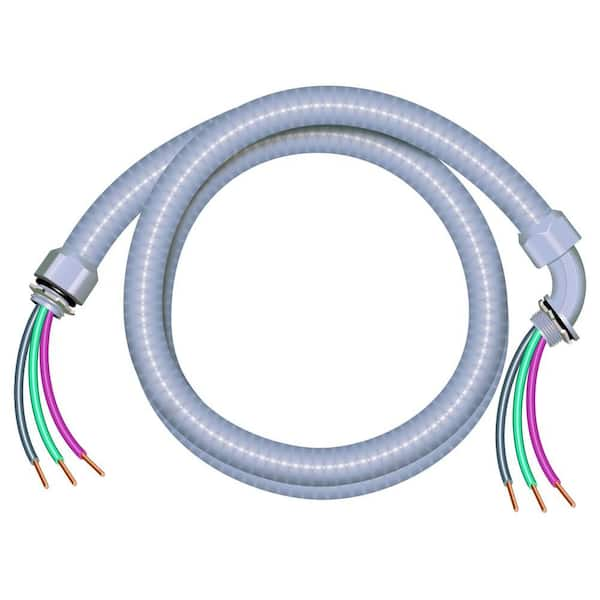Blog
What is an Electrical Whip
An electrical whip, also known simply as a “whip,” is a pre-assembled electrical conduit that includes conductors and connectors. It is commonly used to connect an air conditioning or heating unit to an electrical junction box. The whip simplifies the installation process by providing a ready-made, flexible solution for routing electrical power from the source to the unit.
Here are key features and aspects of an electrical whip:
- Flexible Conduit: The whip is typically made of flexible metal conduit, which allows for easy bending and positioning during installation. The flexibility of the conduit makes it easier to route the wiring around obstacles.
- Pre-Assembled: The whip comes pre-assembled with the necessary conductors (wires) and connectors. This pre-assembly saves time during installation and ensures that the wiring is correctly sized and terminated.
- Conductors: Inside the conduit, there are insulated conductors that carry electrical power. The number and size of conductors in the whip depend on the power requirements of the HVAC (Heating, Ventilation, and Air Conditioning) unit being connected.
- Connectors: The whip has connectors on both ends—one end connects to the electrical junction box or disconnect box, and the other end connects to the HVAC unit. The connectors are designed to make secure and reliable electrical connections.
- Length: Whips come in various lengths to accommodate different installation scenarios. The length of the whip should be selected based on the distance between the electrical box and the HVAC unit.
- Weatherproof Options: In outdoor installations, the electrical whip may be available in a weatherproof version. This helps protect the electrical connections from exposure to the elements, ensuring the safety and longevity of the system.
- Compliance: Electrical whips are manufactured in compliance with relevant electrical codes and standards. Using a whip that meets code requirements is important for safety and regulatory compliance.
When installing a mini-split system or other HVAC equipment, the electrical whip is often used to connect the outdoor condenser unit to the electrical panel or disconnect box. It provides a neat and efficient solution for running the necessary electrical wiring in a safe and code-compliant manner.
As with any electrical work, it’s crucial to follow local electrical codes and the manufacturer’s specifications when installing an electrical whip or any other components of an HVAC system. If you are not comfortable with electrical work, it is recommended to hire a licensed electrician or HVAC professional for the installation.


